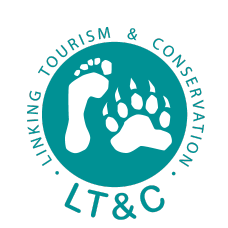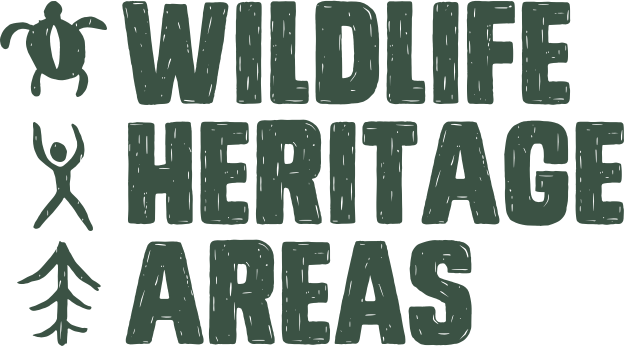A programme developed by World Animal Protection and the World Cetacean Alliance
A new catalyst for responsible wildlife tourism
In the last few decades, the travel industry has relied heavily on zoos, aquariums and other exploitative venues for ‘animal entertainment’ tourism. The dominance of captive animal entertainment has led to a lack of investment in high-quality, responsible wildlife tourism experiences. However, attitudes towards exploitative wildlife tourism are changing, and revenue from it is in decline, particularly across Europe and North America. Travellers and tour operators are increasingly seeking meaningful, positive impact, and community-led wildlife experiences.
What is a Wildlife Heritage Area?
The travel industry currently has no means of identifying the destinations meeting high standards of animal welfare, wildlife conservation, community well-being, and sustainability, whilst also maintaining high tourism value.
The Wildlife Heritage Area programme will change this by connecting wildlife experts, responsible travel companies, and local communities as a network collaborating to designate wildlife-friendly and community-based tourism destinations.
In addition, Wildlife Heritage Areas will create new opportunities for visitors to engage with the unique culture, heritage and biodiversity that underpins each local community’s wildlife offering. By generating pride and income for the responsible protection of wildlife and habitats, this programme will facilitate climate resilience and generate a win-win for people and place.
What are the Wildlife Heritage Area goals?
- Empower local people and communities to care for and protect the unique wildlife in their environment.
- Provide an opportunity for the travel industry to promote more responsible wildlife experiences as an alternative to exploitative, extractive, or consumptive captive or wild animal attractions.
- Emphasise our cultural links with nature as a powerful tool to encourage positive change for animals and people.
- Incorporate animal welfare as an integral part of what constitutes ‘sustainable practices’ or ‘wildlife friendly’ tourism.
- Use an approach combining nature conservation and animal welfare successfully, as part of a growing movement.
How do Wildlife Heritage Areas gain designation?
To be designated a Wildlife Heritage Area an applicant must:
- Bring together a steering committee which is representative of the wildlife-friendly community living and working in the relevant area.
- Partner with a local or international wildlife or conservation not-for-profit that will be responsible for the designation of the Wildlife Heritage Area.
- Provide two pieces of evidence that meet each Indicator within the programme’s holistic Criteria. All applicants must meet Criteria 1,2 and 4 and tourism experiences and visitor attractions involving wildlife exist or are being planned within the Wildlife Heritage Area, they must also meet Criterion 3.
The Wildlife Heritage Area indicators sit within the following criteria:
Criterion 1: Cultural importance of wildlife
Wildlife within the Wildlife Heritage Area is of exceptional cultural importance and a key feature of the local community’s identity.
Criterion 2: Respectful human-wildlife coexistence
The community working to protect the Wildlife Heritage Area has developed a responsible framework to manage the relationship between people and wildlife.
Criterion 3: Responsible wildlife tourism
The community providing wildlife experiences within the Wildlife Heritage Area utilises collaborative management and ongoing research to put the needs of wildlife before commercial interests.
Criterion 4: Steering committee
The Wildlife Heritage Area is guided by an active steering committee representing the community. This steering committee has the authority to make and implement decisions supporting the criteria and delivered through a management plan.
Criterion 5: Management plan
The Wildlife Heritage Area Management Plan must demonstrate a long-term commitment to protecting wildlife and improving the health and well-being of the community in relation to nature. It is a critical part of the Wildlife Heritage Area application.
The Wildlife Heritage Network
The Wildlife Heritage Network brings together specialist not-for-profits, wildlife experts and responsible tourism companies, tour operators, researchers and local wildlife champions to engage, empower, and support each other on a shared mission to protect and celebrate wildlife and habitats.
Conclusion
Wildlife Heritage Areas are a new global benchmark for responsible wildlife tourism, supporting communities in their efforts to deliver better outcomes for animals and people in the places that they call home. Based on a vision that wildlife is not cruelly exploited for tourism, Wildlife Heritage Areas enable local communities to play a powerful role in defining responsible wildlife watching destinations that the travel industry will embrace to benefit animals, people and places. By coming together to reconnect with, protect and respect nature, Wildlife Heritage Areas can help turn the tide on biodiversity loss and wildlife suffering by embracing the power of communities to help solve the planet’s most urgent issues.
Wildlife Heritage Areas is launching in September 2023. Find out more at www.wildlifeheritageareas.org.



